Select your grade range:
For more than 250 years, many explorers set out for Florida in search of land, wealth, and opportunity. Students will examine exploration efforts, key figures, and their significance to Florida through images, interactives, worksheets, slides, video presentations and background information.
STANDARDS, GRADE 3RD, 4TH AND 5TH:
3rd: SS.3.A.1.1; SS.3.A.1.2; LAFS.3.RI.2.5; LAFS.3.RI.3.9;
4th: SS.4.A.3.1; SS.4.A.3.2; SS.4.A.3.3; SS4.A.3.6; SS.4.A.3.7; SC.4.N.1; LAFS.4.RL.1.3; LAFS.4.RI.1.3; LAFS.4.RL.2.4; VA.4.C.1.1; VA.4.C.1.2; SS.4.G.1.1; SS.4.G.1.2; SS.4.G.1.3; SC.4.N.1; SC.4.E.5.1; SC.4.E.5.3; SC.4.E.5.4; SC.4.E.6.5; MA.4.G.5.1; MA.4.G.5.2; MA.4.G.3.3; MAFS.4.MD.3.5; MAFS.4.MD.3.6; MAFS.4.MD.3.7.
5th: SS.5.A.1.1; SS.5.A.3.1; SS.5.A.3.2; SS.5.A.3.3; SS.5.A.4.1;
Activity 1: Explorers of Florida
Activity 2: Planning for Hernando DeSoto
Activity 3: Life at Sea
Activity 4: Celestial Navigation
The communities of Florida’s first people changed over time and eventually disappeared. Discover the techniques and methods used by archaeologists to unlock past life clues.
STANDARDS, GRADE 4TH:
4th: SS.4.A.1.1; SS.4.A.1.2; SS.4.A.9.1; SS.4.A.2.1; LAFS.4.1.6.1; LAFS.4.1.6.5; LAFS.4.4.2.1; LAFS.4.4.2.2; LAFS.4.5.2.1; SC.4.N.1.1; SC.4.N.1.2; SC.4.N.1.4; SC.4.N.1.5; SC.4.E.6.3
Activity 1. Every Object Tells a Story
Activity 2. Deconstructing DeBry
Activity 3. Clan Conundrums
The history of the Seminole Indians is one of resistance. The activities in this lesson focus on important concepts of adaptation, migration, and diversity amid changing circumstances. Students will use links to videos and other sources, images, maps, and background information.
STANDARDS, GRADE 3RD, 4TH AND 5TH:
3rd: SS.3.G.4.1; SS.3.G.4.4; SS.3.G.1.1.; SS.3.G.1.2.
4th: SS.4.A.3.6; SS.4.A.3.7; SS.4.A.3.8; SS.4.A.3.9; SS.4.A.3.10; SS.4.A.4.1; SS.4.A.4.2; SS.4.A.9.1; SS.4.G.1.2; SS.4.G.1.4.
5th: SS.5.A.6.6; SS.5.G.1.1.
Activity 1: The Enduring Seminoles
Activity 2: Forced Migration
Activity 3: John Horse
Discover how people, innovations, and technology contributed to the overall growth of the Sunshine State. Examine these changes using primary sources, including images, videos, graphs, tables, worksheets, and background information.
STANDARDS, GRADE 4TH:
4th: SS.4.A.1.1; SS.4.A.1.2; SS.4.A.4.1; SS.4.A.6.1; SS.4.A.6.2; SS.4.A.6.3; SS.4.A.8.2; MA.4.A.4; SS.4.A.4.In.a; SS.4.A.4.Su.a; SS.4.A.4.Pa.a;
Activity 1: The Melting Pot Overflows: The Census and the Growth of Cigar City
Activity 2: Florida’s Transportation History
The growth and development of Ybor City and West Tampa reflect significant changes at the national level, including the impact on local industry, life for citizens, and Tampa’s role in international affairs.
STANDARDS, GRADE 3RD AND 4TH:
3rd: SS3.A.1.1; SS.3.G.4.1; SS.3.G.4.4;
4th: SS.4.A.6.1; SS.4.A.6.2; SS.4.A.6.3; SS.4.A.6.4; SS.4.A.9.1; SS.4.E.1.1;
Activity 1: Inquiry-Based Learning with Artifacts and Photographs
Activity 2: Kids At Work
The history of the Seminole Indians is one of resistance. The activity in this lesson focuses on evaluating two sides of a critical moment in American history. Students will use primary and secondary sources for critical thinking, analysis, and evaluation. Images, quotations, tables, maps, and background information provide the documents and questions for students to formulate a thesis and explain their argument through writing.
STANDARDS, GRADE 8TH:
8th: SS.8.A.1; SS.8.A.1.2; SS.8.A.1.5; SS.8.A.1.6; SS.8.A.4.3; SS.8.A.4.17; SS.8.A.4.18;
Activity: Document-Based Questions: The Dade Battle
Download Lesson Plan & ActivitiesStudents will discover how people, innovations, and technology contributed to the overall growth of the Sunshine State and its reflection of innovations at the national level. Students will examine these changes using primary sources, including images, videos, graphs, tables, worksheets, and background information.
STANDARDS, GRADE 8TH:
8th: SS.4.A.1.1; SS.4.A.1.2; SS.4.A.4.1; SS.4.A.6.1; SS.4.A.6.2; SS.4.A.6.3; SS.4.A.8.2; MA.4.A.4; SS.4.A.4.In.a; SS.4.A.4.Su.a; SS.4.A.4.Pa.a;
Activity: Florida’s Transportation History
Download Lesson Plan & ActivitiesThe USCGC Tampa has secured its place in our local history for its role in pageantry, protection, and patriotism in the early 20th century. The lesson activities utilize content from TBHC’s textbook: USCGC Tampa, Tampa’s Own. By using primary sources, including images, newspapers, photographs, letters, and videos, along with background information, students will explore the proud role of the Tampa.
STANDARDS, GRADE 9TH, 11TH AND 12TH
12th: SS.912.A.1.2; SS.912.A.3; SS.9.12.A.1.4; SS.912.A.3.4; SS.912.A.4.1; SS.912.A.4.11; SS.912.A.4.3; SS.912.A.4.4; SS.912.A.4.5; SS.912.A.4.7; SS.912.A.4.8; LAFS.1112.RH.1.1; LAFS.111.RH.1.2; LAFS.1112.RH.2.5; LAFS.1112.RH.3.7; LAFS.1112.RH.3.9
Activity 1: 1917…What’s Going on
Activity 2: Off to the Ice Patrol
Activity 3: Our Tampa Boys
Activity 4: The Tampa: A Proud History Pieced Together

